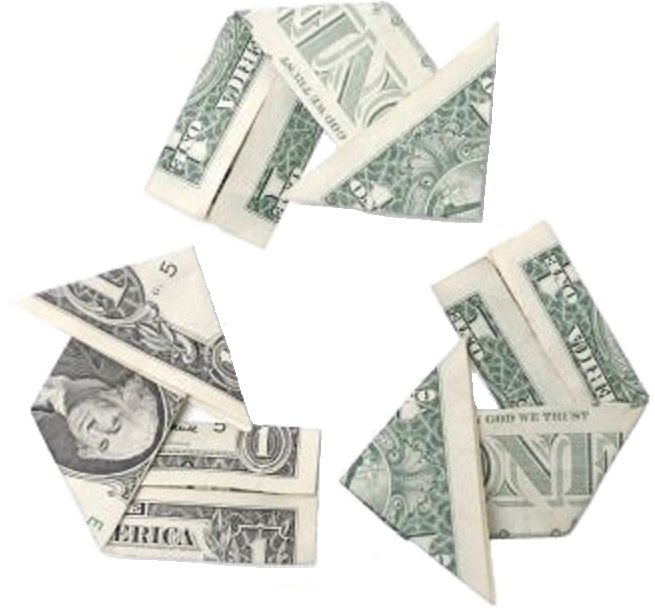
Not that long ago, we did a couple of posts on how to make your office more green.
This time, we thought we would take a look at the green issue from another perspective.
Whilst green consumerism might be an oxymoron (given that the primary tenet of environmentalism is to 'reduce') and a complicated issue in itself (see this fascinating article about the psychology of the green consumer), there is no denying that buying green products, from cleaning solutions to non-toxic paint, is on the up.
The sheer number of companies offering a wide variety of green goods is slightly overwhelming (just type 'green products' into Google and 200 million results pop up, with many of them websites that are selling something).
The internet is a key place for companies to offer eco-friendly items.
So, if you are a new company offering a brand new green product - perhaps a range of low impact cleaning products, or eco-gadgets - how do you make it stand out from the crowd?
There are the usual approaches to online marketing, which include doing your research - it's a competitive marketplace and you need to be aware of what everyone else is doing: it's very easy to pick up tips from the competition by looking at their websites.
However, there are also some specific challenges that face anyone selling a green product online.
It's not just about incorporating the colour green or pictures of fields into the design of your website.
Thinking about the things that are important to green consumers presents two major strands to bear in mind when designing your website:
A. Transparency:
Products must be seen to do what they say they do. If your product doesn't perform as it should, that means it isn't as eco-friendly, which is after all its primary selling point.
B. Integrity:
Consumers must be able to trust your product.
It's all very well to say that your products are green or ethically sourced, but without some kind of proof or policy statement, why should a potential customer believe you?
Unsubstantiated claims can catch up with you, as this survey of environmentally cleaning products from Tesco, Sainsbury and Ecover by Which? showed.
So, how do you convince consumers that your products have integrity?
How do you achieve a credible transparency when it comes to advertising a product no one has heard of?
In basic terms, how do you persuade potential customers that the should buy your product over a non eco-friendly one, and why should they buy it from you and not one of the more established eco and ethical brands?
1. Create Content
The key to offering both transparency and integrity on a website is content.
- Make product descriptions as detailed as possible (list ingredients, include information about how your product is made or sourced, highlight its eco-credentials such as efficiency or low-impact materials, offer reasons why someone should use it).
- Offer full information about your company in an 'about us' section (why you exist, your principles and mission statement).
- Include information about how your product should be used. For maximum transparency a video of it being used is an ideal way to present this information (this is also exactly the kind of content search engines like Google value most).
- Include testimonials of satisfied customers. Nothing promotes confidence like genuine messages from people who have used and like your products.
2. Communicate
Create online forums which show the human side to your company, your passion for your products and offer opportunities for comment and feedback.
An excellent way to generate confidence and present your company as having integrity is by being approachable.
There are various ways this can be achieved, but is probably most easily executed through a blog, Facebook page or twitter feed (or a combination of the three).
Using social media for business is one of GWS's favourite topics, as any regular reader of this blog will know, but if done right it can be an excellent method of opening lines of contact with customers in a genuine and effective way.
Underlining this should be an awareness that ethical consumers generally tend to have particular views about large corporations, and you should bear in mind that styles of design and communication associated with multinational companies and large brands are likely to strike a different note than your customers may expect.
A personal touch can go down well on a green website, as Nigel's Eco Store demonstrates.
The golden rule to bear in mind is that, as with any consumer product, you are selling more than just what comes in the box or bottle - you are selling an idea and a lifestyle.
Green and ethical consumers generally want to see a wider commitment to the causes they espouse; which, according to the Ethical Consumer Research Association Ltd in the UK, are grounded in values about human rights, environmental sustainability and a holistic approach to using purchasing power as a move towards an 'ethics-based society'.
If you can't communicate to your potential customers that you share these essential values, its likely that they will move on to those who can.
There are now several bodies who keep consumers informed of the green and ethical implications of every product they purchase; and green consumers are some of the most informed, and motivated to get informed, out there.
This makes designing a website to sell ethical or green products a challenge, but a worthy one, if it inspires you to think harder about exactly why you have chosen to sell ethical products and communicate your reasons and your purpose more effectively.
Genuine commitment on both a personal and a business level, and an ability to tell your customers the reasons you care, are essential to include on your 'About Us' page; see for example Buy Green.
Lastly, do your research and think about exactly who you are targeting.
There is not just one 'green consumer type'.
As Amy Hebard, founder of Earthsense, has said, targeting the various types of green consumer is 'an enormous challenge for marketers today' because while some buyers are inconsistent and selective with "how green" they are, others will demand a total demonstration of commitment to green values; it depends on the product.
Think about to what extent you are targeting the general public - who may be only mildly aware of, say, climate change or water pollution, and buy a product with just acceptable green credentials - or the serious, informed, green consumer who researches every stage of a production cycle, and reads the ingredients list thoroughly before committing to a purchase.
Increasing awareness of environmental issues mean that consumers have more access to information about their purchasing choices than ever before - make sure you are the most informed of all about the products you endorse and sell.
As the online retailer Greenfeet says, "If you don't trust us, then you won't buy from us again."
These are just some opening thoughts from GWS on how to sell ethical or green products online - if you have any further tips or ideas please do let us know.
We'll be thinking about this more in the coming weeks and possibly following up with a second post.
Continue to Part Two: Designing a Green Website to Sell Ethical Products Online Part 1

